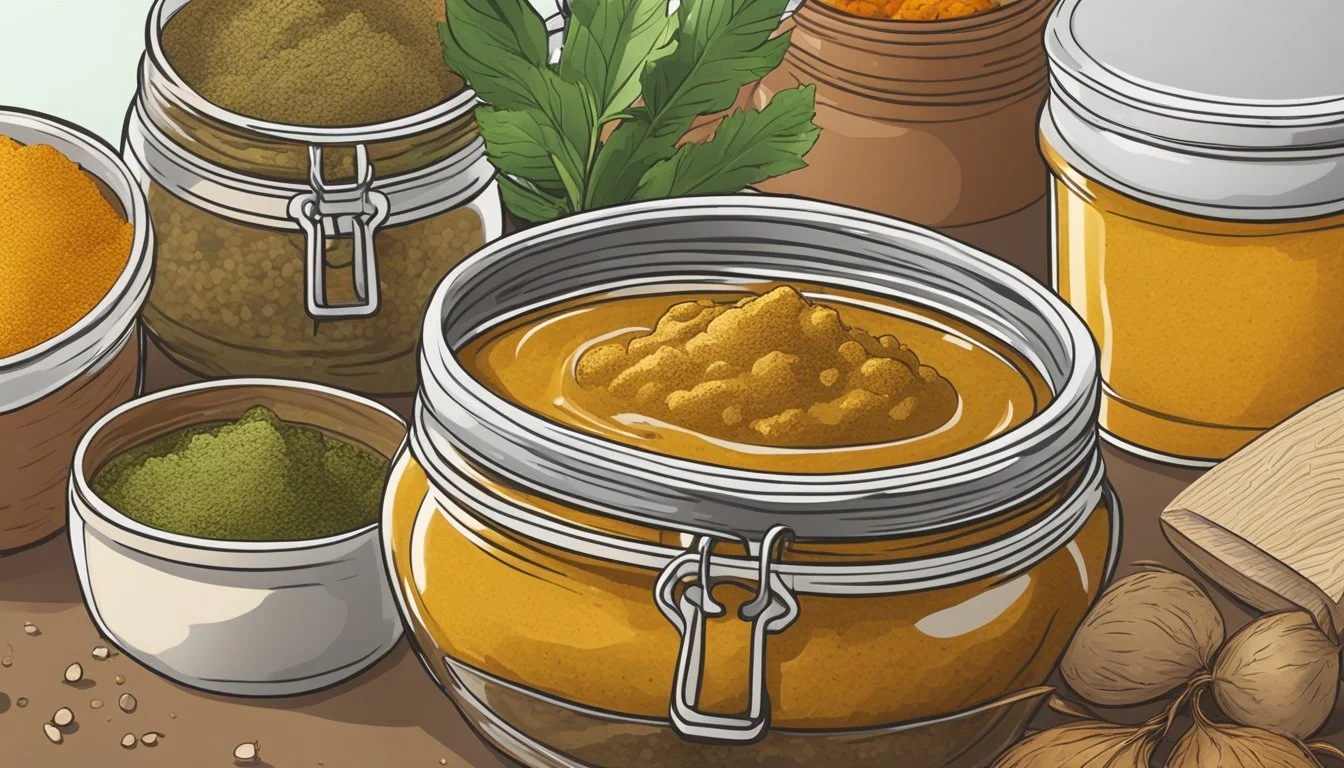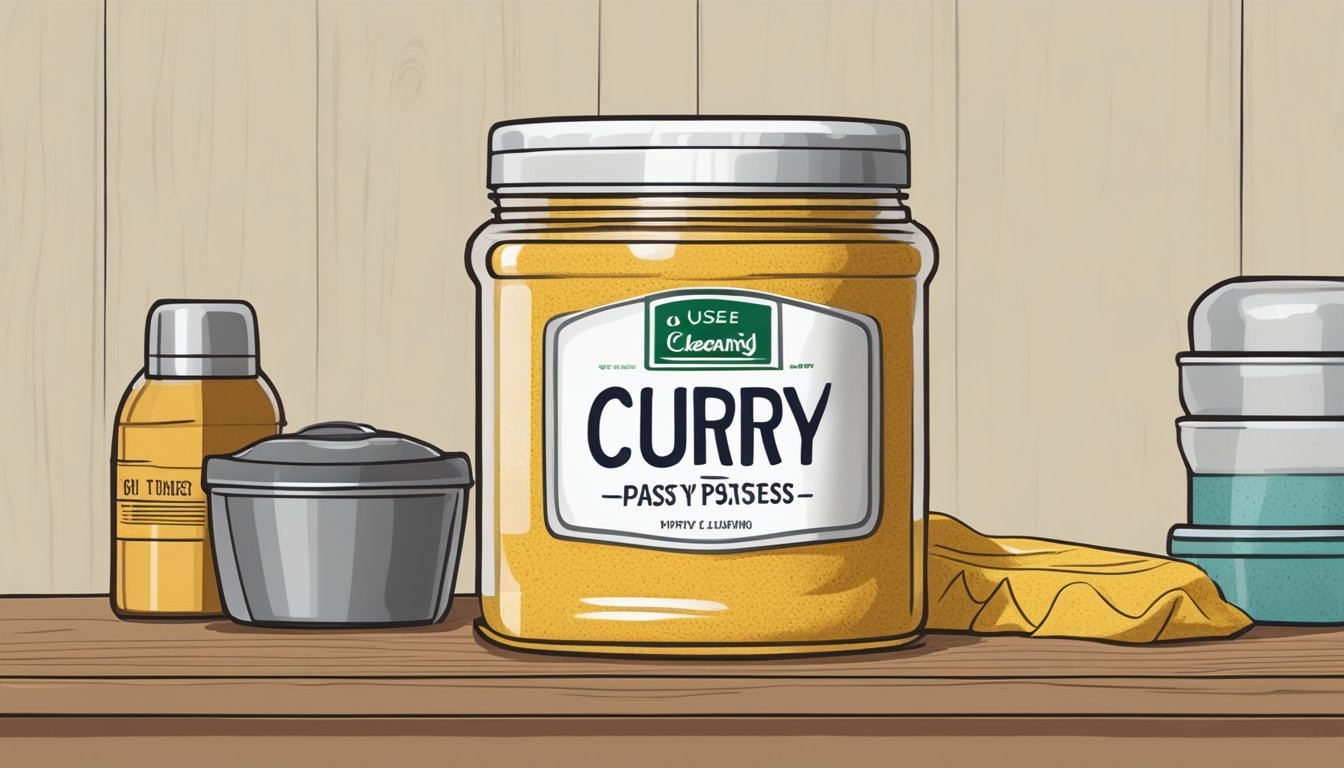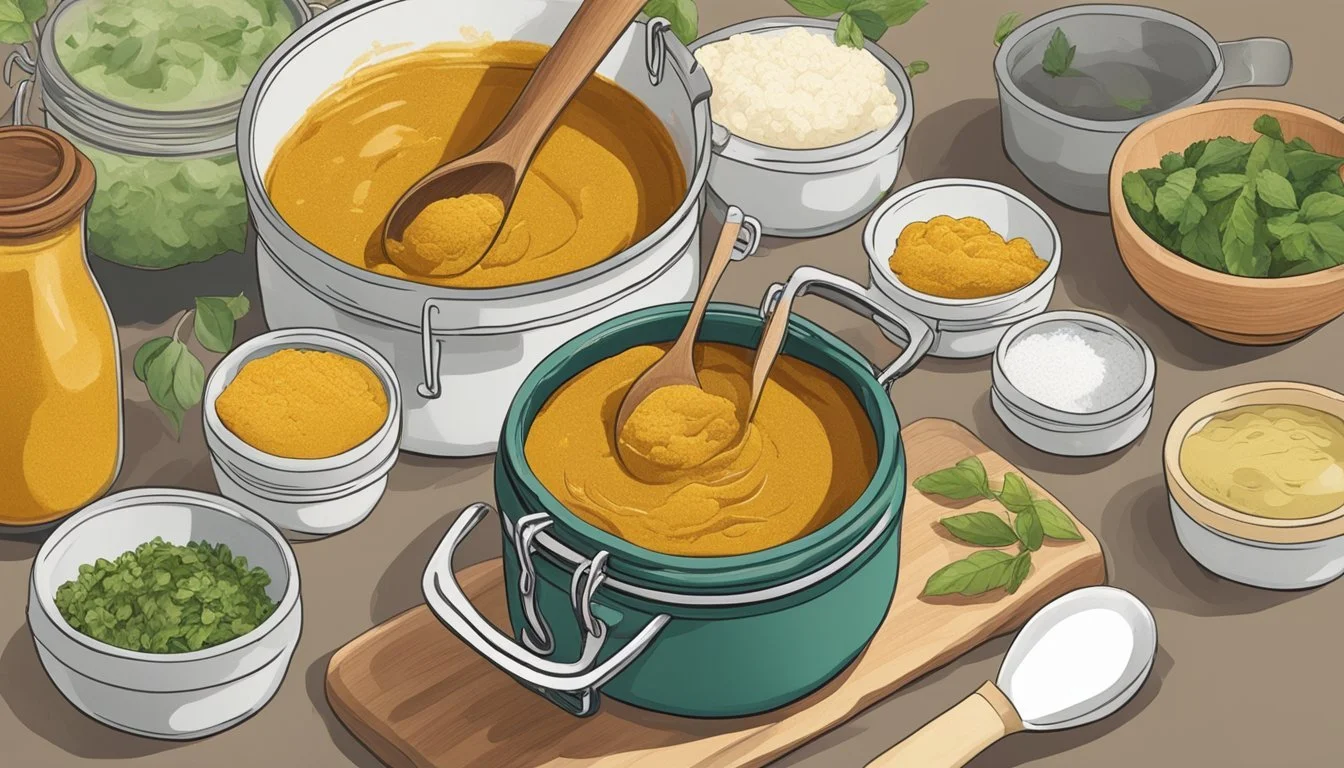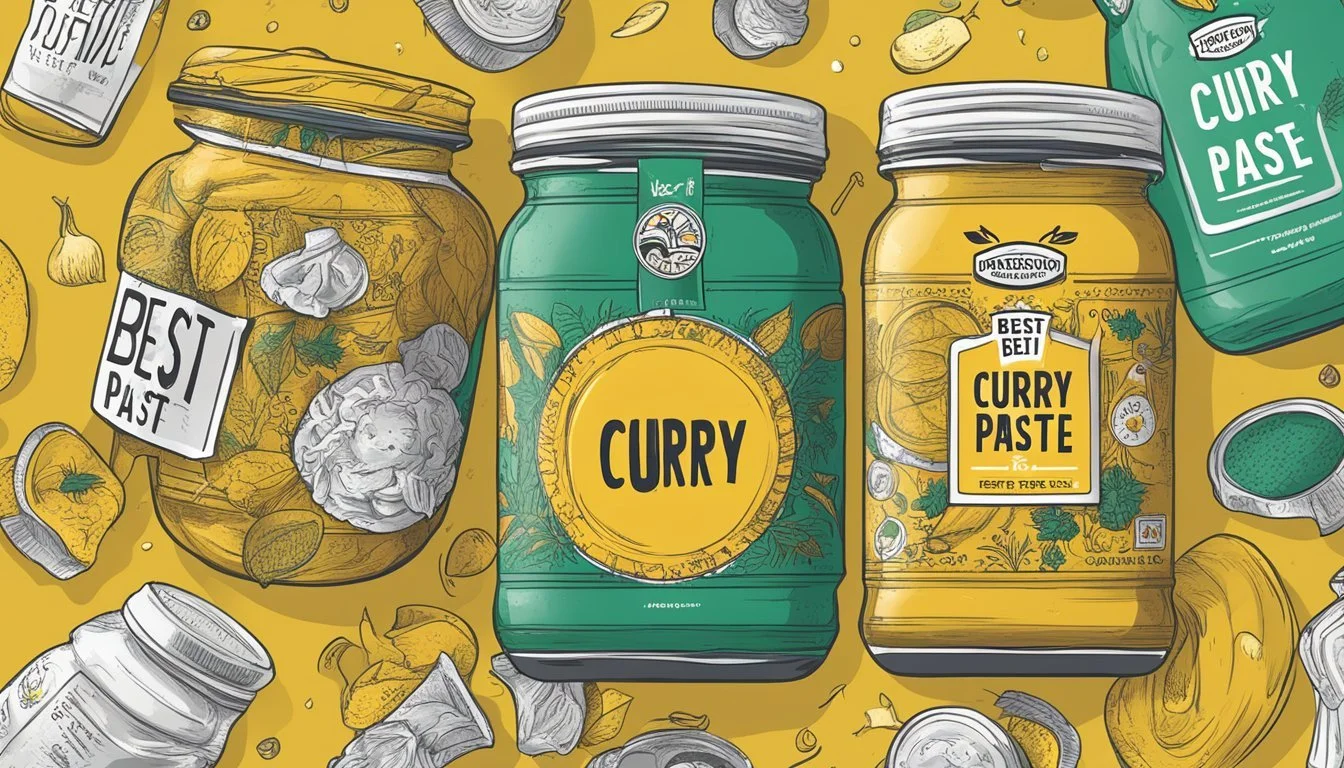Does Curry Paste Go Bad?
Shelf Life and Storage Tips
Curry paste is a staple in many kitchens, prized for its vibrant flavors and versatility. Yes, curry paste can go bad, and its quality and flavor are significantly impacted by how it is stored. An opened jar of curry paste, if kept in the refrigerator, should ideally be consumed within two to three weeks. Beyond this period, while it may still be safe to use, the paste's flavor will diminish over time.
The shelf life of unopened curry paste is much longer, typically lasting three or more years when stored in a cool, dry place. However, once opened, it's crucial to monitor the paste for any signs of spoilage such as an off smell or the growth of mold. Proper storage not only extends the paste's usability but also maintains its rich and aromatic flavor.
For those looking to make the most out of their curry paste, supplementing with fresh herbs and spices can revive some of the lost potency if the paste starts to lose its vibrancy. Careful handling and mindful storage practices can ensure that every dish made with curry paste retains its intended depth of flavor and quality.
Understanding Curry Paste
Curry paste is a crucial component in various cuisines, adding a burst of flavor and complexity to dishes. Its ingredients and characteristics vary, impacting how each type is used in different culinary traditions.
Differences Between Thai and Indian Curry Paste
Thai and Indian curry pastes differ significantly in flavor profiles and usage. Thai curry paste typically has a fresher, more aromatic blend, featuring ingredients like lemongrass, galangal, and chili peppers. These elements create a bright, vibrant taste that works well in coconut milk-based dishes.
Indian curry paste leans on deeper, earthier flavors, prominently using turmeric, coriander, garlic, and ginger. These spices provide a warm, robust flavor suitable for rich, hearty sauces. Indian cuisine often utilizes curry paste in a variety of gravies and stews.
Key Ingredients in Curry Pastes
Curry pastes rely on a mixture of spices and herbs to develop their complex flavors. Thai curry paste often includes lemongrass, galangal, chili peppers, garlic, and fish sauce, giving it a distinctive zing.
Indian curry paste features turmeric, coriander, ginger, garlic, and often tomato. Each ingredient contributes to the paste's depth and richness. Fresh herbs like cilantro may also be included to enhance the aroma and flavor.
Varieties of Curry Paste
There are several varieties of curry paste, each with unique characteristics. Thai cuisine includes red, green, and yellow curry pastes, each varying in heat levels and ingredient compositions. Red curry paste is typically the hottest, made from a blend of red chili peppers, while green curry paste is milder but still packs a punch with green chili peppers. Yellow curry paste, milder than the others, incorporates turmeric, giving it a vibrant color and warm flavor.
In Indian cuisine, Madras, vindaloo, and tandoori pastes are popular. Madras curry paste is known for its spicy, tangy flavor, while vindaloo paste is intensely hot and vinegar-forward. Tandoori paste includes yogurt and spices, providing a milder, flavorful marinade for meats.
Each type of curry paste brings something unique to the table, making curry a beloved dish across different cuisines.
Shelf Life and Expiration
Curry paste, whether unopened or opened, has varying shelf lives influenced by storage conditions. Understanding the signs of spoilage and guidelines for safe consumption ensures the best use of the product.
Unopened vs. Opened Curry Paste
Unopened curry paste generally has a long shelf life if stored in a cool, dry place. It can last for several months past the printed expiration date without significant loss of quality. Proper storage away from direct sunlight and at a stable temperature prolongs its usability.
Opened curry paste requires refrigeration. Typically, it lasts between 2 to 3 weeks in the fridge, though it can be used for several months if no spoilage signs are present. Quality and flavor may gradually decline over time.
Signs of Spoilage
Several indicators suggest that curry paste has gone bad. Staleness is the first noticeable change, leading to a loss of flavor. Mold growth is a clear sign of spoilage due to the moisture content in the paste. Another potential sign is an off smell, which indicates bacterial growth.
Visual changes such as discoloration can also signal spoilage. Always check the paste's texture; if it appears slimy or dry, it might be unsafe to use.
Safe Consumption Guidelines
To safely consume curry paste, always adhere to storage recommendations. Ensure unopened paste is kept in a cool, dry place. Once opened, refrigerate immediately in an airtight container. Using a clean spoon each time can prevent contamination and extend shelf life.
Avoid using curry paste that smells off, shows mold, or has drastically changed in appearance. Even if it is past the expiration date, properly stored unopened paste can be tested for quality before use. If in doubt, it's safer to discard.
Proper Storage Techniques
Storing curry paste correctly extends its shelf life and ensures the best flavor. Key points to focus on include choosing the right storage location and containers, as well as methods to maximize freshness.
Storing in the Pantry vs. Refrigerator
Unopened jars of curry paste can be kept in a cool, dry place, like a pantry. They can remain in good condition for up to two years if stored away from direct sunlight and humidity.
Opened jars should be moved to the refrigerator immediately. In the refrigerator, curry paste can retain its flavor and safety for up to three months. Always check the "best by" date for guidance and avoid storing opened jars at room temperature to prevent spoilage.
Best Containers for Storage
Glass jars are the preferred option for storing curry paste. They create an airtight seal that helps preserve freshness.
Plastic containers are also suitable if they are of food-grade quality and airtight. Avoid using containers that can absorb smells or allow air inside, as this can reduce the shelf life of the paste.
Airtight vacuum-sealed bags are another effective storage method, particularly for freezing curry paste. This method minimizes air exposure and can extend the paste's life significantly.
Maximizing Freshness and Flavor
To maximize the freshness and flavor of curry paste, always seal containers tightly after each use. Label and date containers to track how long they have been stored.
Store curry paste at temperatures below room temperature but above freezing. Keeping it consistently cold reduces the chance of spoilage and maintains flavor integrity.
Avoid exposing the paste to moisture, which can promote bacterial growth. A cool, dry place extends shelf life and prevents the development of mold or rancid smells.
By following these techniques, users can ensure their curry paste remains flavorful and safe for as long as possible.
Preventing Contamination and Spoilage
Proper precautions are necessary to ensure curry paste remains safe and flavorful for consumption. Key areas include minimizing exposure to bacteria, using correct handling techniques, and identifying spoilage signs.
Minimizing Exposure to Bacteria
Minimizing exposure to bacteria is crucial in maintaining curry paste quality. Store the paste in airtight containers to prevent bacteria growth and mold contamination. Refrigerating the opened jar can extend its shelf life by up to three months.
Avoid moisture exposure since it creates an environment conducive to bacterial growth. Ensure utensils used with the paste are clean and dry to inhibit contamination.
Handling Techniques to Avoid Contamination
Proper handling of curry paste can greatly reduce the risk of contamination. Use clean, dry spoons each time to avoid introducing moisture and bacteria into the container. Following each use, seal the container tightly before storing it in a cool, dark place or refrigerator.
Transfer unused paste to smaller containers to prevent opening the main jar multiple times, a practice that limits exposure to contaminants.
Detecting Spoilage in Curry Paste
Detecting spoilage early can protect health and maintain culinary quality. Look for signs such as unusual smells, color changes, and mold growth on the paste. A rancid odor or a darker hue often indicates the paste has spoiled and should be discarded immediately.
Mold growth is a clear indicator of spoilage and makes the curry paste unsanitary. Always check the paste before use in curries, soups, and stews to ensure it is safe and of high quality.
Extending the Usability of Curry Paste
The usability of curry paste can be extended significantly with proper storage methods. Freezing curry paste and thawing it correctly are key techniques in preserving its flavor and quality.
Freezing Curry Paste
Freezing curry paste is an effective way to prolong its shelf life. To do so, portion the paste into small amounts using an ice cube tray. This allows easy access to single servings when needed.
Once frozen, transfer the curry paste cubes to a freezer-safe bag or an airtight container. Ensure it's well-sealed to prevent freezer burn. For extra protection, wrap the cubes in saran wrap before placing them in the container.
Label the container with the date of freezing. Although curry paste can last several months in the freezer, consuming it within six months ensures better flavor and quality.
Thawing Frozen Curry Paste
Thawing frozen curry paste requires gentle handling to maintain its texture and flavor. For best results, transfer the needed amount from the freezer to the refrigerator and let it thaw gradually. This method prevents excessive moisture from developing.
If in a rush, place the frozen curry paste in a bowl of cool water. Avoid using hot water as it may degrade the paste's quality. Microwaving is not recommended, as it can result in uneven thawing and possible flavor loss.
Use the thawed paste immediately, and do not refreeze. Refreezing can affect both the texture and taste, making it less desirable in culinary applications.
Incorporating Curry Paste in Cooking
Curry paste can enhance a wide variety of dishes, adding depth and complexity to flavors. This section explores creative uses and tips for adjusting recipes to suit individual tastes.
Creative Ways to Use Curry Paste
Curry paste goes far beyond traditional curries. It can serve as a flavorful rub for meats, a marinade for seafood, or an aromatic base for soups. For instance, mixing curry paste with yogurt and vinegar creates a zesty marinade ideal for chicken or fish. Blending it with coconut milk can result in a rich, creamy sauce for vegetables.
Incorporating curry paste into stir-fries can also elevate the dish, especially when combined with ingredients like shrimp paste for an added umami kick. As a spread, it can be used on sandwiches or wraps, providing a spicy twist. Additionally, adding a spoonful to scrambled eggs or roasted vegetables can bring new life to everyday meals.
Adjusting Flavors in Recipes
When using curry paste, adjusting flavors is crucial for achieving a balanced dish. The intensity of curry paste can vary, so start with a small amount and gradually add more to taste. If the dish turns out too spicy, ingredients like coconut milk or yogurt can help mellow the heat while adding creaminess.
Balancing acidity is also essential. Adding a splash of vinegar or lime juice can brighten flavors, especially in rich dishes. For sweeter profiles, a touch of sugar or honey can counteract bitterness. It's equally important to taste frequently during cooking, allowing adjustments to be made gradually for the desired result.
Troubleshooting Common Issues
Properly maintaining curry paste involves addressing signs like separation or texture changes, and discoloration or loss of smell. Recognizing these signs ensures the paste remains safe and flavorful.
Separation and Texture Changes
Curry paste may experience separation, where oils rise to the top. This is normal and can often be remedied by simply stirring the paste.
If the texture changes significantly, such as becoming excessively liquid or chunky, it could indicate spoilage. Maintain the paste in an airtight container to prevent moisture and air exposure, which contribute to texture issues.
Store the jar in a cool, dark place away from direct sunlight. This helps preserve its consistency.
Discoloration and Loss of Smell
Discoloration, such as the paste turning a darker or duller color, often signals degradation. Exposure to air and light can cause these changes. Always check for rusted lids or compromised glass jars, which can also affect the paste’s condition.
Loss of smell is another key indicator of spoilage. Fresh curry paste has a vibrant aroma. If the smell becomes faint or off, it might not be safe to use. Proper storage in a refrigerator helps preserve the paste’s fragrance and flavor.
Health and Safety Considerations
Curry paste can be a delightful addition to many dishes, but improper storage or using expired paste can pose health risks. Understanding the dangers of consuming expired curry paste, as well as the role of preservatives, is crucial for safe consumption.
Risks of Consuming Expired Curry Paste
Expired curry paste may harbor bacterial growth or mold, leading to food poisoning. Pathogens in the paste develop over time, particularly if stored improperly.
Signs of bad curry paste include an unpleasant odor, changes in texture, or visible mold. Ingesting compromised paste could cause stomach cramps, diarrhea, and other symptoms of foodborne illness.
Proper storage in a cool, dry place or refrigeration is key to reducing health risks. Even unopened jars can become unsafe if stored in damp or warm environments.
Understanding Preservatives in Commercial Curry Pastes
Commercial curry pastes often contain preservatives to extend shelf life. Common preservatives include sodium benzoate and potassium sorbate, which inhibit bacterial and mold growth.
While preservatives help extend the shelf life, curry paste still requires proper storage. An open jar should be refrigerated and used within a few months, whereas an unopened jar remains stable longer.
Preservatives are generally safe but might cause reactions in sensitive individuals. Always check labels if you have known sensitivities to certain additives.
Understanding these factors contributes to safer consumption of curry paste, whether freshly made or store-bought.








